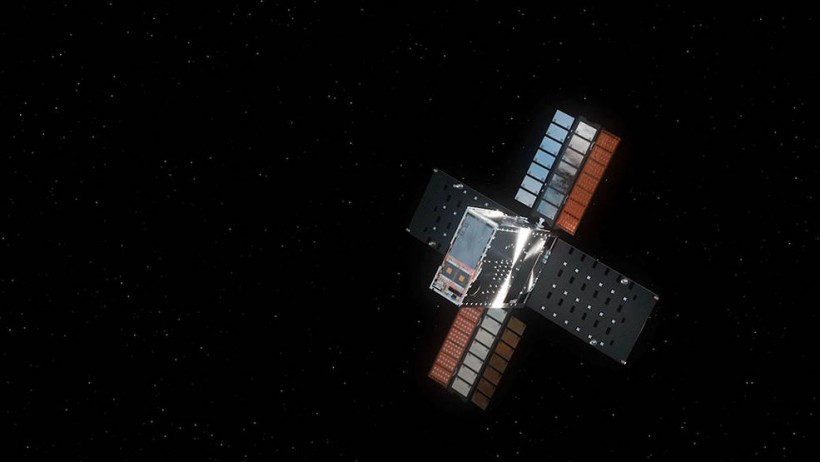The Eyes on the Solar System web-based visualization tool from NASA JPL lets you "see" the SmallSat as it travels to the Moon and searches for water ice in the darkest craters there. Jet Propulsion Laboratory built and runs Lunar Flashlight, a small satellite about the size of a briefcase. It will use near-infrared lasers and an onboard spectrometer to map ice in permanently shadowed areas near the Moon's south pole.
NASA's Lunar Flashlight took off at 2:38 a.m. EST on December 11 from Florida's Cape Canaveral Space Force Station. It has conversed to mission controllers and said it is successful. Pasadena Now said the SmallSat was released from its dispenser about 53 minutes after launch to look for surface water ice in craters that are always in shadow at the South Pole.

This illustration shows NASA’s Lunar Flashlight, with its four solar arrays deployed, shortly after launch. The small satellite, or SmallSat, will take about three months to reach its science orbit to seek out surface water ice in the darkest craters of the Moon’s South Pole.
NASA Launches 4-Month Journey of Lunar Flashlight
The National Space Agency just sent a "SmallSat" to the Moon. The main goal of this mission is to learn more about the Moon's structure, especially its dark areas. Astronomers think it will take the satellite about four months to get to the Moon, where it will lock on to the Moon's gravity and start its probe.
The Lunar Flashlight was sent into space from the Cape Canaveral Station in Florida. After 53 minutes, the spacecraft was taken off of its carrier.
NASA's Jet Propulsion Laboratory says that the small spacecraft won't come back to Earth after its mission is over.
Through NASA's Eyes on the Solar System, the public can watch the Lunar Flashlight move through space in real time.
According to NASA, they will use a "reflectometer outfitted with four lasers that emit near-infrared light in wavelengths typically absorbed by surface water ice.
When the light is absorbed by the surface-as opposed to when it strikes a rock and reflects the spacecraft-it would be possible to determine whether water ice is present in the said places.
ALSO READ: NASA Artemis 1 Orion Finally Comes Home After Stunning Journey to the Moon and Back
NASA Launches 4-Month Journey of Lunar Flashlight
NASA's Lunar Flashlight has already started its four-month trip to the Moon. It will soon give answers and information about the water ice on the Moon's surface, which will be used for more research.
Aside from the well-known NASA Artemis project, which will carry on the Apollo manned Moon missions, NASA also has a different emphasis on lunar surface probes. All the missions to the Moon are now tests, and the main goal is to find out what the conditions and experiences are like when going there.
LAUNCH UPDATE: We're standing down from the June 27 launch attempt for #CAPSTONE to allow @RocketLab to perform final systems checks. Teams are evaluating weather and other factors to determine the date of the next launch attempt. Details: https://t.co/b4GuJW87Bx pic.twitter.com/xUkWLGhw4N
— NASA Technology (@NASA_Technology) June 26, 2022
One good example is the NASA CAPSTONE mission, in which a CubeSat was sent toward the surface of the Moon. Its main job is to send data and information to the Artemis team about the Moon's orbit and gravity so that they can prepare for future launches and avoid any problems or challenges.
Now, another small satellite is on its way to the Moon for a different mission. This one's goal is to learn more about the Moon's less-explored areas.
RELATED ARTICLE: NASA's Orion Capsule Is Now on Its Way Home After Its Closest Approach to the Moon
Check out more news and information on Space in Science Times.














